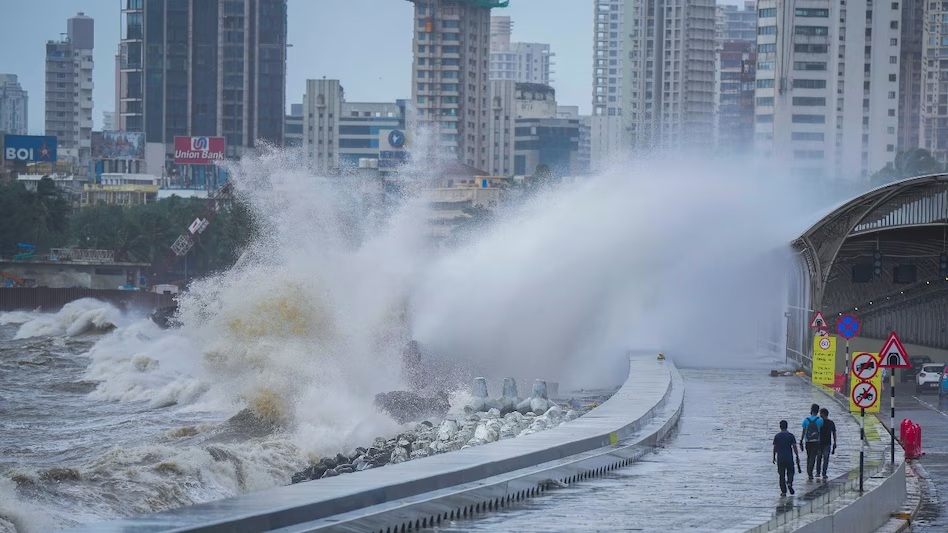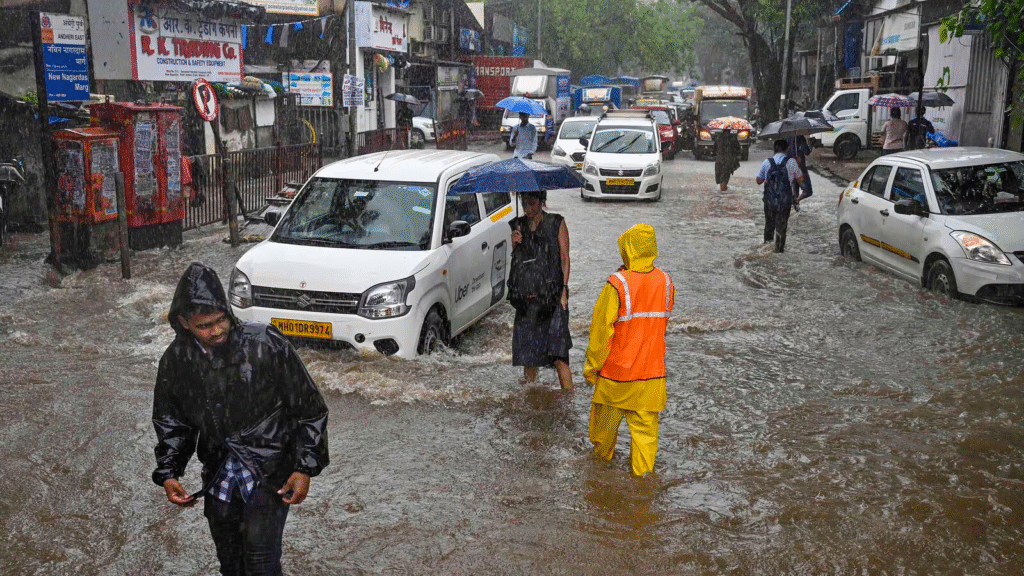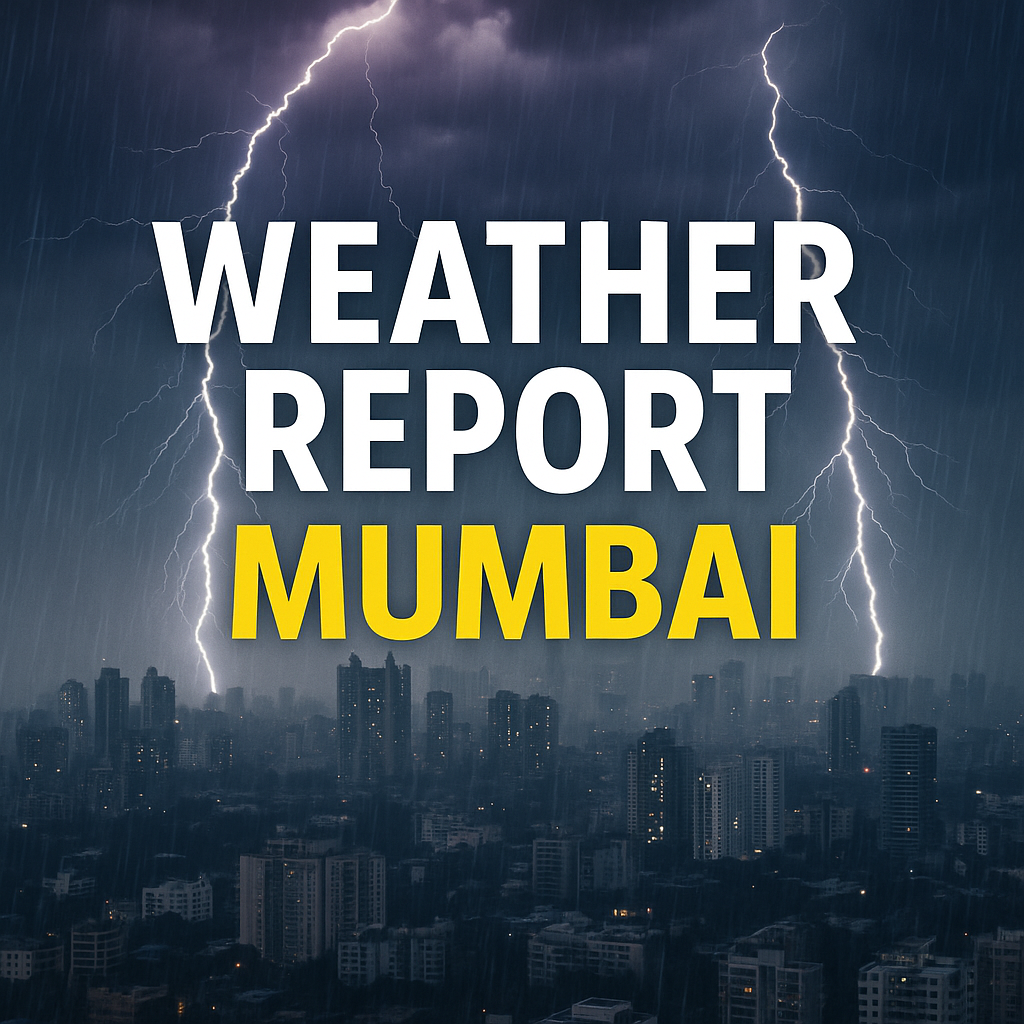
Mumbai, the financial hub of India, is gearing up for a significant shift in weather conditions as pre-monsoon showers are expected to bring relief from the ongoing heatwave. The India Meteorological Department (IMD) has issued a yellow alert for Mumbai and its surrounding regions, warning of thunderstorms, light rainfall, and gusty winds over the next few days. This announcement has sparked widespread attention, with residents preparing for the upcoming weather transition.
The Current Weather Scenario in Mumbai
As of now, Mumbai is experiencing high levels of humidity, with daytime temperatures hovering around the 33-34°C mark. The sweltering heat has left many residents eagerly anticipating the arrival of rains. The IMD’s yellow alert indicates the possibility of thunderstorms accompanied by lightning and wind speeds ranging from 30-40 km/h, which could potentially mark the onset of pre-monsoon activity in the region.
On Monday evening, the first signs of the anticipated weather changes were observed, with light drizzles reported in areas such as Colaba and Bandra. These scattered showers provided a brief respite from the heat, signaling the arrival of weather patterns associated with the pre-monsoon season.
The Significance of the Yellow Alert
The IMD categorizes weather alerts into four levels—green, yellow, orange, and red—each representing varying degrees of severity. The yellow alert issued for Mumbai is a cautionary measure, advising residents and authorities to stay alert but not alarmed. It specifically highlights the potential for thunderstorms with light to moderate rainfall, which could disrupt normal activities if precautions are not taken.
Neighboring districts like Thane, Raigad, and Palghar are also under similar alerts, indicating a broader regional impact. While these weather changes may bring temporary relief from the heat, they also pose challenges, particularly for those commuting in the city’s bustling streets.
What Does This Mean for Daily Life in Mumbai?
The pre-monsoon showers often serve as a precursor to the monsoon season, but they also bring their own set of challenges. Mumbai’s infrastructure, known for its resilience, will be tested once again as the city prepares for potential waterlogging, traffic snarls, and disruptions to public transport.
The yellow alert advises residents to avoid venturing into open spaces during thunderstorms and to secure loose objects that may be displaced by gusty winds. Commuters are encouraged to carry umbrellas or raincoats as a precaution. Authorities, meanwhile, are gearing up to tackle potential issues like clogged drains and fallen trees, which are common occurrences during this time of year.
The Science Behind Pre-Monsoon Activity
Pre-monsoon activity, characterized by thunderstorms and localized rainfall, is a result of the interaction between hot, moist air and cooler air masses. These weather patterns are typical of the transition period between summer and monsoon. Mumbai’s coastal location adds another layer of complexity, as the Arabian Sea plays a crucial role in influencing local weather conditions.
The IMD’s advanced radar systems and satellite technology allow for accurate monitoring and prediction of these weather changes. The department’s ability to issue timely alerts ensures that residents and authorities can take proactive measures to minimize the impact of adverse weather.
The Broader Implications of Early Rainfall

The arrival of pre-monsoon showers has implications that extend beyond mere weather changes. For the agricultural sector, these rains are crucial as they prepare the soil for the upcoming monsoon. Farmers in nearby regions are closely monitoring the weather, hoping for rainfall that will aid in sowing crops like paddy, millet, and pulses.
Urban planners and civic authorities also view this period as an opportunity to address infrastructure issues. From clearing drainage systems to repairing roads, the pre-monsoon season serves as a critical window for ensuring the city is prepared for the monsoon’s full impact.
A Look Back: Mumbai’s Monsoon History
Mumbai’s relationship with the monsoon is legendary, often described as a love-hate affair. The city’s lifeline, its local trains, and buses are both aided and hindered by the rains. While the monsoon brings much-needed relief from the heat and replenishes water reservoirs, it also disrupts daily life with waterlogging, flooding, and traffic chaos.
The 2005 floods remain a stark reminder of the city’s vulnerability during extreme weather events. Since then, significant efforts have been made to improve Mumbai’s disaster management and flood mitigation systems. However, challenges persist, making each monsoon a test of the city’s preparedness and resilience.
The Role of Technology in Weather Prediction
In recent years, advancements in meteorological science have enhanced the accuracy of weather forecasts. The IMD’s use of Doppler radar, satellite imagery, and AI-powered models allows for detailed predictions of rainfall patterns, wind speeds, and temperature fluctuations.
These tools have proven invaluable in issuing timely alerts, such as the current yellow alert for Mumbai. By providing real-time updates, the IMD empowers citizens to make informed decisions, whether it’s planning their commute or safeguarding their homes against potential damage.
Preparing for the Upcoming Monsoon Season
With the pre-monsoon showers serving as a precursor to the monsoon, Mumbai’s civic authorities are leaving no stone unturned in their preparations. From desilting drains to pruning overgrown trees, efforts are underway to minimize the impact of heavy rains.
Residents, too, are advised to take proactive measures. Ensuring that roofs and balconies are leak-proof, keeping emergency supplies like flashlights and first-aid kits handy, and staying informed through reliable weather updates are some of the steps that can help individuals navigate the season safely.
Environmental and Climate Considerations
The changing weather patterns observed in Mumbai are part of a larger narrative of global climate change. Rising temperatures, unseasonal rainfall, and increased frequency of extreme weather events are all indicative of the challenges posed by a warming planet.
Mumbai, with its dense population and coastal location, is particularly vulnerable to the impacts of climate change. Efforts to build climate resilience—through sustainable urban planning, enhanced disaster management systems, and public awareness campaigns—are crucial for safeguarding the city’s future.
Conclusion: Staying Resilient Amidst Weather Changes
As Mumbai braces for its first showers of the season, the city’s spirit of resilience and adaptability comes to the fore. The yellow alert issued by the IMD serves as a timely reminder of the importance of preparedness in the face of changing weather patterns.
While the rains bring relief from the scorching heat, they also underscore the need for caution and vigilance. By staying informed and taking proactive measures, Mumbai can navigate this transitional phase towards the monsoon with minimal disruption.
In the coming weeks, all eyes will be on the skies as the city awaits the arrival of the monsoon, a season that defines Mumbai’s identity and rhythm. Until then, the pre-monsoon showers serve as a prelude to the symphony of life that unfolds when the rains finally arrive.

